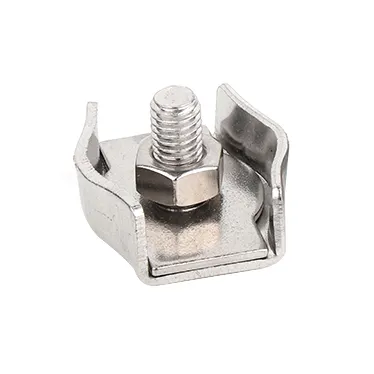News
Říj . 06, 2024 09:23 Back to list
hardware turnbuckles
Understanding Hardware Turnbuckles A Comprehensive Overview
Turnbuckles are essential hardware components that play a vital role in various applications, ranging from construction to sailing, and even in theatrical rigging. Their primary function is to adjust the tension or length of cables, ropes, and other linear adjustable components. Understanding the design, types, and applications of turnbuckles is essential for anyone involved in projects that require tension adjustment, stability, or alignment.
What is a Turnbuckle?
A turnbuckle consists of a metal frame that holds two threaded eye bolts. By rotating the central body, the distance between the eye bolts can be adjusted, either tightening or loosening the connection between two points. This mechanism allows for precise adjustments, enabling users to maintain the necessary tension and align components effectively.
Types of Turnbuckles
Turnbuckles are available in various styles, each designed for specific types of hardware connections. The main types include
1. Hook and Eye Turnbuckles These have a hook on one end and an eye on the other, making them suitable for connecting cables or ropes to fixed points. They are commonly used in applications such as fencing, suspended structures, and rigging.
2. Jaw and Jaw Turnbuckles Featuring a jaw on both ends, these turnbuckles are ideal for connecting two lengths of wire or cable. They offer a strong grip and are often employed in heavy-duty applications, such as bridges or large tents.
3. Swage Turnbuckles These are designed for permanent connections, often used in marine environments. Swage turnbuckles allow the user to create a secure connection without the need for additional fittings, making them both efficient and reliable.
hardware turnbuckles

Materials Used
Turnbuckles can be made from various materials. Common options include
- Stainless Steel Known for its strength and corrosion resistance, stainless steel is ideal for marine and outdoor applications. - Galvanized Steel Offering good durability and protection against rust, galvanized options are often used in construction and for outdoor projects. - Aluminum Lightweight and resistant to corrosion, aluminum turnbuckles are often chosen for applications where weight is a concern, such as in aviation or specialized rigging.
Applications of Turnbuckles
The versatility of turnbuckles allows them to be utilized across numerous industries
- Construction They are used to tension cables in structural frameworks, ensuring stability and alignment during the building process. - Sailing In sailing, turnbuckles adjust the tension in shrouds and stays, maintaining the integrity of the mast and sails. - Theaters In theatrical productions, turnbuckles help rig backdrops and lighting, allowing for flexible adjustments to stage designs. - Sports In sports facilities, turnbuckles are used in netting systems, ensuring that protective barriers are safely tensioned.
Conclusion
Turnbuckles are more than just hardware; they are essential components that ensure safety, stability, and efficiency across various applications. By enabling fine adjustments in tension and alignment, turnbuckles facilitate success in construction, sailing, and entertainment. Understanding their types, materials, and applications can significantly enhance the ability to choose the appropriate turnbuckle for any project, ensuring both performance and safety. With their pivotal role in numerous industries, turnbuckles will continue to be an integral part of our hardware toolkit.
